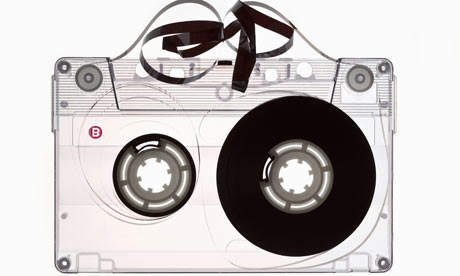Scientists have found a way to quickly check the status of an old magnetic tape

Engineers from the University of South Carolina have come up with a non-invasive way to check the quality status of magnetic tape, which will determine if a particular record needs to be restored. The method is based on infrared spectroscopy.
New technologies are rushing forward, and obsolete equipment is turning into junk. For a long time already, for the recording of audio, the world abandoned magnetic tape in favor of laser discs, and then switched to a digital format that was not tied to drives.
But on a magnetic film cultural values can still be found - unpublished recordings of famous artists, lectures by famous scientists, significant historical moments. And the life of the film is short-lived - it loses its physical properties, becomes brittle, the oxide layer containing the information exfoliates from the flexible substrate. A prolonged stay in humid and warm climates leads to a chemical reaction, as a result of which the film becomes sticky.
Enthusiasts working with old records know the way to restore old films - “ baking ”, that is, heating to a certain temperature. After several hours in the oven, excess moisture leaves the film, and for a while it returns to its original properties.

Snackmaster Pro Audio Coil Baking Machine with Four Trays, Thermostat and Fan
But not every film can be repaired in this way - some have already deteriorated so much that it’s just not worth the time. At the same time, the time for digitization is becoming less. According to some estimates, libraries, museums and other storage facilities in the United States alone contain up to 46 million cassettes (video and audio). The number of equipment suitable for their digitization is gradually decreasing, so all the information can not be saved in any case.
“You ask why, in general, do not heat all the films,” explains Stephen L. Morgan, a university chemist and co-author of the work. “Nobody just has time for that.” Our goal was to develop a simple and non-invasive method for identifying tapes that are in critical condition so that they can be put in the first place for digitization. "
Scientists conducted experiments on materials from the Library of Congress in New York. They took 133 random audio tapes stored there from 1970 - 1990. Using attenuated total-reflection Fourier transform infrared spectroscopy, tape segments were analyzed. It turned out that the presence in the peak spectra of polyester-urethane degradation products with an accuracy of 92% indicates a very poor condition of the film. Such tapes should be the first baking candidates.
Especially for those people who will be digitizing old films, scientists have written a program that facilitates the determination of the state of a particular cassette - in case the former do not have a chemical background. Their program can even be trained by training it using cassettes from a specific collection - since the chemistry of different manufacturers of cassettes, as well as cassettes of different ages, varies slightly.
George Blood, a specialist in the storage of information from tapes, says that his work is a race against time, and that a huge amount of information from magnetic tapes threatens with extinction. “After 20 years, we will no longer be able to lose a single tape,” he says. “Any means of speeding up the process of [digitization] will seriously affect the amount of cultural information that we can digitize.”
Recently, we already wrote about the work of Marion Stokes , who for 35 years has recorded more than 40,000 video tapes with broadcasts broadcast on television. Now volunteers from the organization Internet Archive are engaged in their digitization.
